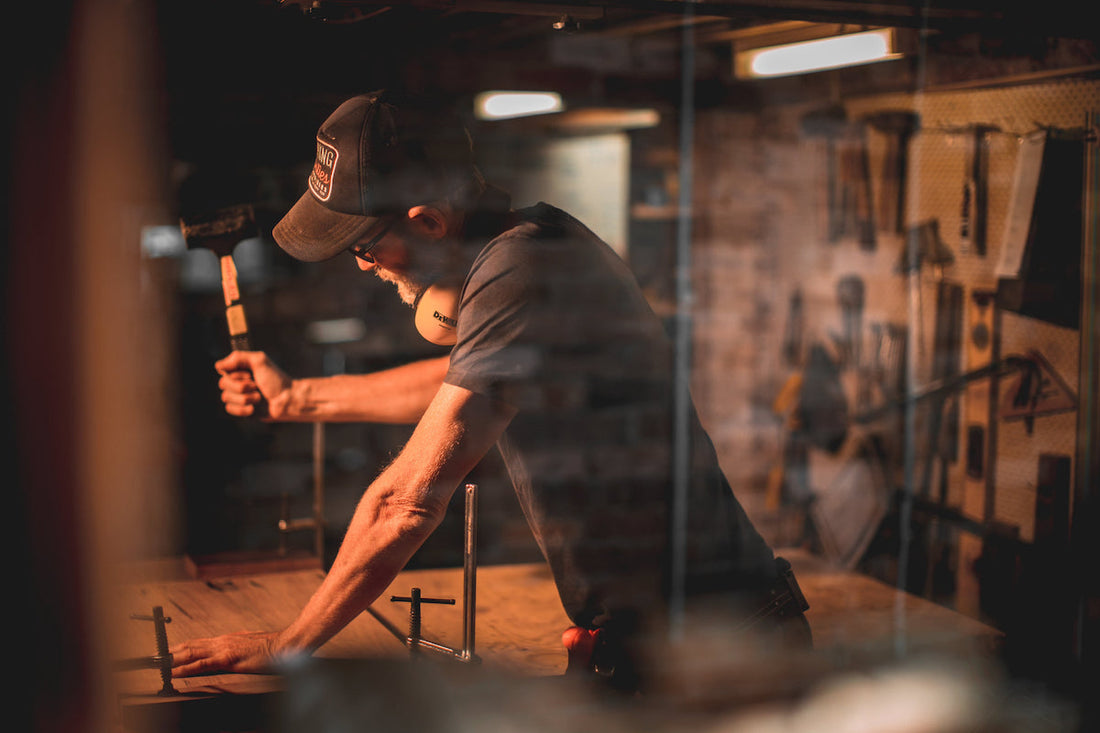I never thought I’d enjoy failure as much as I do in furniture making.
Failure has always been a part of my dialogue - I mean ‘they’ always say ‘fail fast, fail often, fail forward’. These are all terms you hear a lot in the entrepreneurial and startup space. The notion is that if you don’t challenge yourself, you won’t find out what works and what you’re truly capable of. The same goes for furniture making.
I’ve spent a lot of time in user experience design and managing teams on making websites and complicated mobile apps. Failure is our best friend in that space because it defines where the boundaries are and more importantly, where the opportunities are.
Different context, but it's the same in furniture making. My process for a new design or new custom item usually starts with research, design and then prototyping. That is:
- Research what problem we’re solving, what’s needed to solve it, appropriate standards, regulations and any specifications.
- Design includes paper, digital interfaces and 3D drawings to contextualise and decipher requirements before wasting any natural resources.
- Prototyping is the process of making the item/s, testing them in practical environments and seeing if they’ll adhere to the required standards.
I’d prefer to know what my furniture can and can’t do so that I can either design it in different ways or I can accurately inform clients on what to expect with each item. It’s all a part of my quality control.
Lately, I’ve been designing and making tables, for so many different applications: side table, coffee table, outdoor table, dining table, bath table, round table, rectangle table, kitchen bench, and even an integrated hibachi grill in a table. So yes, I have been thinking a lot about tables!




Inspired? Let's build your piece
It’s so exciting to be a part of so many people's personal furniture pursuits/dreams. Not only because I’m making them a table, but because these are the items that bring people together to form connections, build relationships and create lasting memories.
I have been working on an outdoor table recently - 2.2m long, 1.1m wide which will have a great role for entertainment here at my home. However, beyond this, the aim has been to design a table that can be flat-packed for transport to locations far away from mine here in Sydney. Sending a 2-3m table can be quite costly for the room it takes up in a truck, so I have been determining more efficient ways to design my joins in a way that enables flat packing and easy assembly whilst retaining sturdiness and strength at all times. This will hopefully allow me to sell and send more tables at affordable prices to people around Australia who love reclaimed timber furniture.
Whilst dragging the table under all its weight, one of the side rails blew out on me. Correct, I shouldn't have been dragging it, but it was an everyday test all the same. Ordinarily, this would frustrate me, but it actually motivated me. I found a fault in a new design that requires me to rethink how it's made and to improve its tolerances (especially when using an approach for quick assembly).


I strive to use the best toolsets I can (eg: Festool tools - German engineering is at its absolute best with this brand and their tools are very accurate, reliable, trustworthy and tested). I surround myself with other aspiring makers, practice new techniques and generally try to better myself in this arena.
Constantly testing myself, my products, my processes, my tools and my relationships (with makers) is what will make me the best furniture maker I can be and what will result in me providing the best products to my future customers.
Always let failure be your friend.
Until next time.

